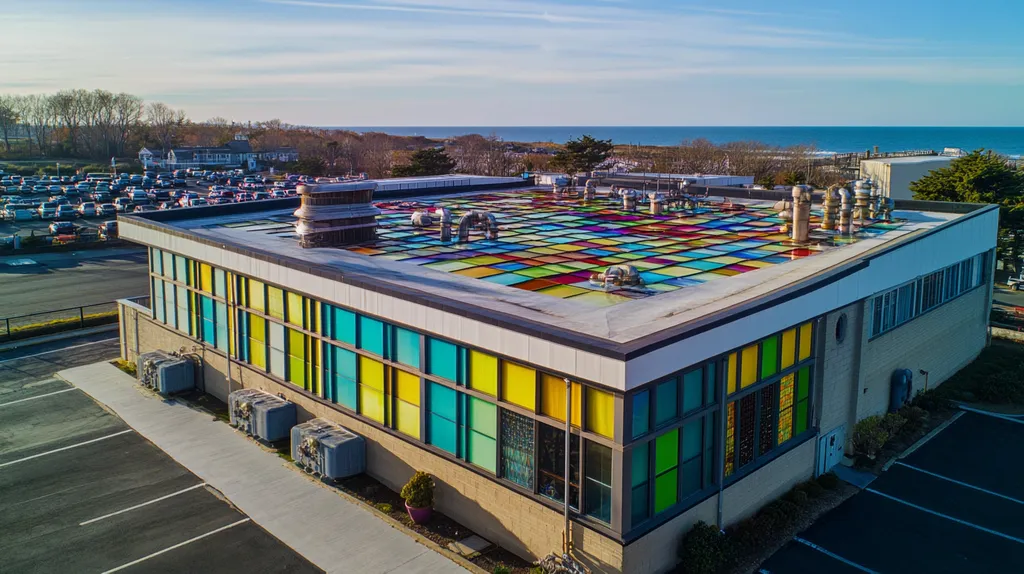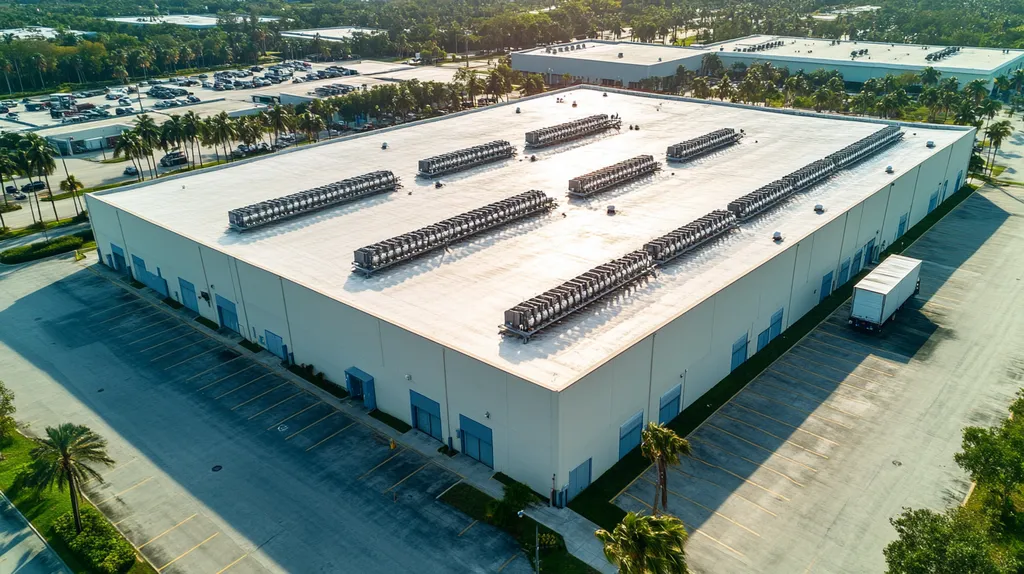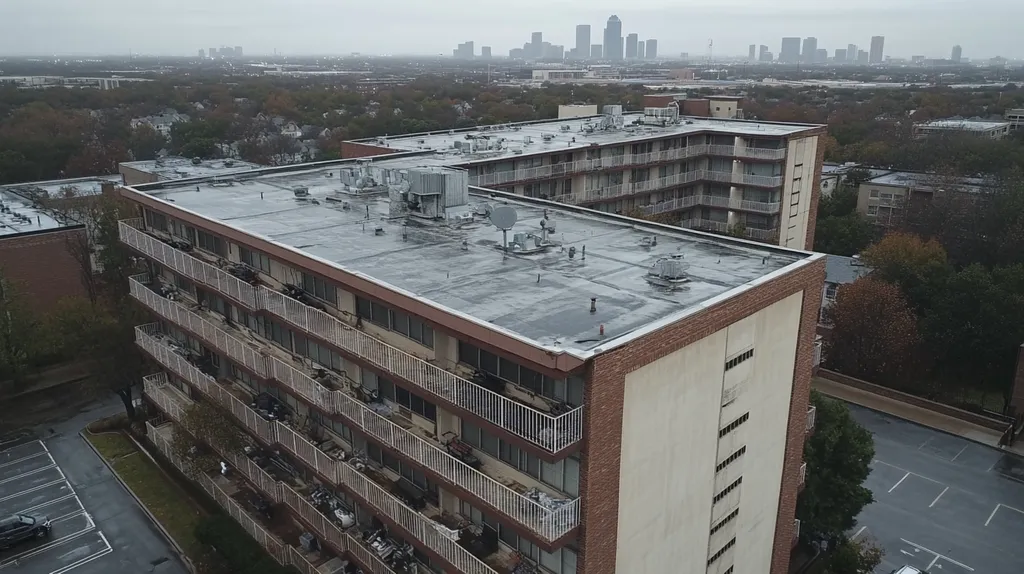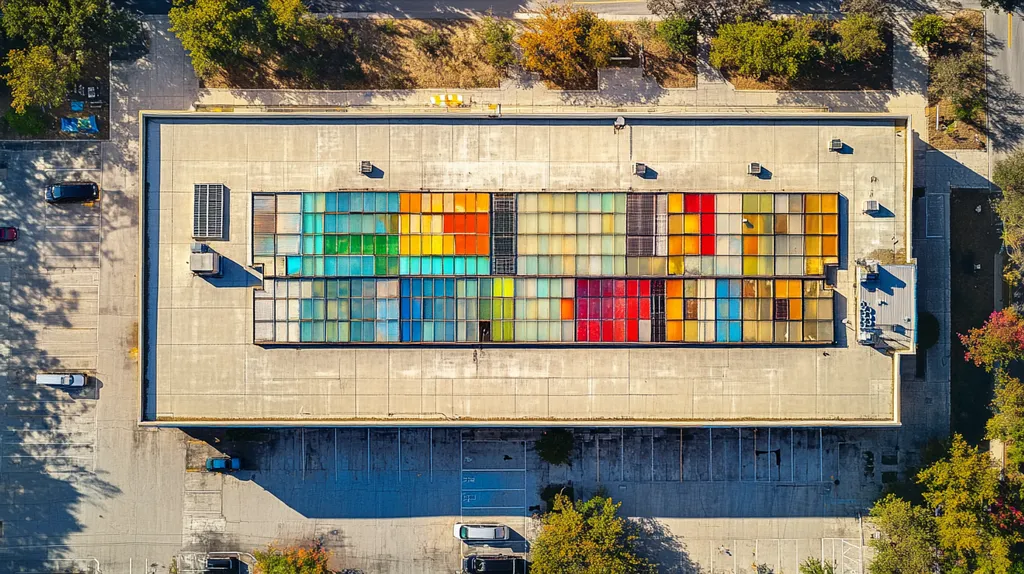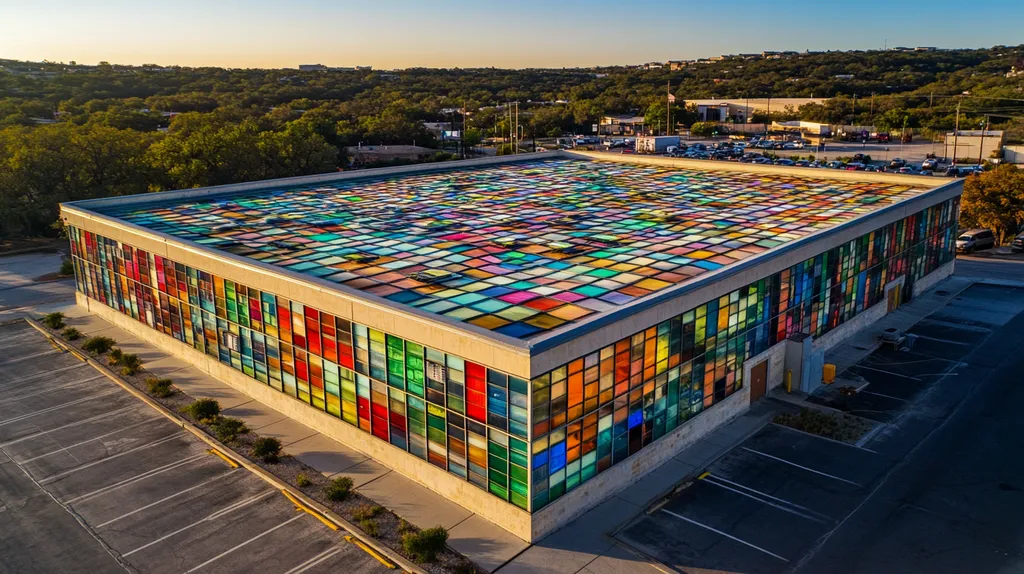In today’s competitive business environment, unexpected roofing issues can cost facilities up to $10,000 per hour in operational downtime. Studies show that 85% of these disruptions could be prevented through strategic planning and maintenance.
For facility managers and property owners, maintaining continuous operations during roofing work isn’t just a convenience—it’s a financial imperative. Even minor interruptions can impact productivity, employee safety, and customer satisfaction.
This comprehensive guide examines proven strategies across performance, financial, compliance, risk management, and operational considerations to help organizations maximize uptime while ensuring roofing integrity.
SECTION 1: PERFORMANCE FACTORS
The effectiveness of a roofing system significantly influences a facility’s operations and overall sustainability. A roof that is compromised can drive up energy costs, risk inventory damage, and lead to unexpected downtime. Alarmingly, industry reports indicate that 50% of commercial roofs are replaced prematurely due to poor maintenance. To ensure minimal disruptions, facility managers must focus on key performance factors like roof surface integrity, effective drainage, and insulation efficiency.
Roof Surface Integrity
Maintaining the integrity of a roof surface is vital for shielding a facility from harsh weather conditions. Damage from age or severe weather can lead to leaks, which have a direct impact on operations. Regular inspections for cracks, blisters, and punctures are essential for proactive management.
Routine maintenance is a powerful strategy to reduce risks and extend the lifespan of a roof. Proactive measures can enhance a roof’s life by up to 20 years. Consistent inspections and timely repairs bolster surface integrity and protect against unexpected challenges.
Investing in robust materials like thermoplastic polyolefin (TPO) or modified bitumen can significantly improve performance. These options not only withstand extreme weather but also require less frequent maintenance. By prioritizing roof surface integrity, organizations can minimize disruptions and enhance operational stability.
Key Action Items
Drainage and Water Management
Effective drainage and water management systems are crucial for the long-term functionality of roofs. Inadequate drainage can lead to water accumulation, increasing the chances of leaks and serious structural damage. Alarmingly, 90% of roofing failures can be traced back to poor water management strategies.
Regular evaluation of existing drainage systems is imperative. Installing gutters, downspouts, and scuppers will help direct water away from buildings, significantly protecting assets and minimizing interruptions.
Incorporating innovative solutions like green roofs and rainwater absorption systems effectively mitigates drainage issues while enhancing energy efficiency. Integrating these approaches can lead to smoother operations and resource conservation. Utilizing technology, such as drainage monitoring, alerts facility managers to potential complications before they escalate.
Key Action Items
Insulation and Energy Efficiency
Insulation is critical for roofing performance, significantly influencing energy efficiency. Facilities with inadequate insulation risk losing considerable heat, which can inflate energy costs. Studies indicate that uninsulated roofs can let go of up to 30% of a building’s energy.
Upgrading to high-quality insulation materials can substantially reduce both heating and cooling expenditures. Options like rigid foam boards, fiberglass, or spray foam can greatly enhance performance. Beyond cost savings, effective insulation promotes sustainability within a facility.
Regular energy audits can pinpoint insulation weaknesses and upgrade opportunities. Aligning insulation strategies with roofing solutions ensures maximum energy efficiency, reducing disturbances that often arise from heating and cooling system failures.
Key Action Items
SECTION 2: FINANCIAL CONSIDERATIONS
The financial implications of roofing decisions are significant and can directly affect facility budgets. Property owners may face soaring costs if they overlook critical evaluations between maintenance and replacement. According to the National Roofing Contractors Association, addressing minor repairs promptly can prevent expenses from escalating by 20% to 50% over time. This section offers insight into key financial factors, including maintenance versus replacement costs, budgeting for preventive maintenance, and the essential cost-benefit analysis of repairs.
Maintenance vs. Replacement Costs
Finding the right balance between maintenance and replacement is essential for effective financial management. Regular maintenance not only prolongs the life of a roof but can also save substantial money in the long run—often extending its lifespan by a decade or more. For instance, a well-maintained roof can last up to 20 years, whereas a neglected one may need replacement in just 10.
Routine inspections and minor repairs are typically more economical than major renovations. Investing in regular upkeep can help avoid costly complete roof replacements, which generally range from $5,000 to $15,000 per 1,000 square feet.
Decision-makers should carefully consider the long-term benefits of continuous maintenance against the short-term allure of neglect. Partnering with a professional contractor for a customized maintenance plan can clarify and forecast expenses more accurately.
Key Action Items
Budgeting for Preventive Maintenance
Preventive maintenance budgets are often neglected, yet they play a crucial role in consistent financing. Allocating specific funds for roofing maintenance can help avoid unexpected financial setbacks. This proactive budgeting approach allows facility managers to forecast repairs and allocate resources effectively.
A simple strategy is to earmark 1-3% of the property’s total value each year for roofing maintenance. For instance, a facility valued at $500,000 should aim for a maintenance budget of $5,000 to $15,000 annually, covering inspections and minor repairs to prevent larger, unforeseen expenses.
Implementing an annual inspection plan fosters a predictable budget, enhancing overall financial management. By prioritizing preventive measures, facilities can significantly reduce the likelihood of emergency repairs that disrupt operations and create added costs.
Key Action Items
Cost-Benefit Analysis of Repairs
Conducting a cost-benefit analysis for roof repairs is key to making sound financial decisions. This analysis involves comparing the costs of repairs against the long-term benefits of extending the roof’s lifespan. Understanding these metrics empowers facility managers to prioritize repairs that maximize financial returns.
For example, if a $1,000 repair prevents $15,000 in future damage, this reinforces the value of timely intervention. Roofing experts advocate analyzing potential savings from repairs, along with the costs associated with possible water damage or structural issues that could develop from inaction.
Additionally, documenting repairs and outcomes over time offers key insights for future fiscal decisions. This data supports the case for investing in immediate repair needs and highlights patterns that suggest increased preventive maintenance might be necessary.
Key Action Items
SECTION 3: COMPLIANCE REQUIREMENTS
Ensuring compliance with roofing regulations is not just about following the law; it’s a critical step in protecting assets and maintaining operational stability. Violating building codes can result in hefty fines and unforeseen repair costs, making it essential for facility managers to understand and adhere to these requirements. A solid grasp of compliance helps prevent interruptions and fosters a safe work environment.
Building Code Adherence
Building codes set the foundation for safety and performance standards in roofing systems. Each locality may have specific codes influenced by local environmental factors and building designs. Noncompliance can disrupt operations, forcing facility managers to halt work and incur expensive modifications.
For operational integrity, roofing materials must align with local fire ratings and structural mandates. Selecting the wrong materials can lead not only to fines but also threaten the building’s overall stability. Conducting regular reviews against current codes keeps roofing projects aligned with compliance standards.
Whenever upgrades or modifications occur, it’s crucial for facility managers to reassess compliance with these regulations. Engaging a skilled roofing professional knowledgeable about local requirements can make this process more efficient, allowing for smoother operations.
Key Action Items
Regulatory Standards for Roofing
Regulatory standards govern the installation, maintenance, and inspection of roofing systems. Agencies like the Occupational Safety and Health Administration (OSHA) provide guidelines to safeguard worker safety during roofing tasks. Ignoring these standards can lead to safety violations, delays, and even work stoppages.
For example, failure to comply with OSHA regulations during installation can lead to accidents, impacting productivity and risking injuries. Facility managers should prioritize equipment and training that align with these safety standards.
Conducting regular inspections in light of these regulations catches potential violations early. Maintenance teams should keep thorough records of inspections and corrective measures, as these can be invaluable during audits and help protect against financial repercussions.
Key Action Items
Documentation and Reporting
Maintaining detailed documentation and reporting practices is vital for ensuring compliance. Thorough record-keeping guarantees that all roofing work adheres to legal standards and facilitates future inspections. Facility managers should catalog roofing materials, installation methods, and maintenance schedules meticulously.
For example, organizing past inspection and repair records demonstrates compliance during audits, reducing the likelihood of fines. This strategic documentation ensures smoother operational processes and mitigates unexpected costs.
Developing a systematic reporting protocol for compliance-related incidents helps in recognizing trends that may necessitate attention. Such proactive measures not only safeguard the facility but also enhance the well-being of its occupants.
Key Action Items
SECTION 4: RISK MANAGEMENT
In the world of commercial and industrial roofing, overlooking potential hazards can lead to devastating financial repercussions. Alarmingly, 40% of businesses that experience water damage fail to recover fully, underlining the urgent need for comprehensive risk management strategies. Facility managers must prioritize identifying risks, minimizing water damage, and developing emergency response plans to maintain uninterrupted operations. This section outlines vital strategies to foster proactive prevention and effective crisis management.
Identifying Potential Hazards
Facility managers need to perform diligent inspections to pinpoint risks before they escalate. Common hazards include leaks from aging roofs, storm damage, and the danger of falling debris. Regular assessments can reveal hidden problems, such as weakened materials or ineffective drainage systems.
A straightforward checklist can facilitate hazard identification and may include items like visual inspections, reviewing historical weather data, and assessing roof performance. Utilizing technology such as drones or infrared cameras can enhance these evaluations by offering detailed insights.
Engaging roofing professionals for routine evaluations is essential to ensure all potential issues are addressed. This proactive approach protects against minor repairs evolving into major problems and avoids unexpected financial burdens.
Key Action Items
Mitigating Water Damage Risks
Water damage poses one of the most covert threats to roofing systems. Even minor leaks can result in severe structural issues, mold proliferation, and steep repair costs. Proactive prevention measures are vital in curbing these risks.
Investing in high-quality roofing materials resistant to moisture is crucial. Regular maintenance tasks, including cleaning gutters and downspouts, help prevent water buildup and ensure effective drainage systems.
Incorporating advanced technologies like moisture detection sensors can offer early alerts for leaks. These systems notify facility managers about potential problems, enabling timely interventions.
Key Action Items
Emergency Response Planning
Despite robust preventive strategies, emergencies can arise. A well-configured emergency response plan is essential for minimizing the impacts of unexpected roofing issues. This plan should detail clear steps for communication, mitigation, and recovery during a roofing crisis.
Establishing a response team with assigned roles can streamline actions in emergencies. For example, appointing a safety officer and a communication lead ensures that team members understand their responsibilities during a crisis.
Conducting regular drills and training sessions enhances preparedness and reinforces proper responses to roofing emergencies. These proactive measures significantly reduce confusion, allowing for quick stabilization of the situation.
Key Action Items
SECTION 5: OPERATIONAL PROCEDURES
Implementing effective operational procedures is crucial for minimizing disruptions during roofing maintenance. Inadequate attention to these procedures can result in costly repairs and operational downtime that negatively impact a facility’s financial health. For example, organizations that suffer from roof leaks may experience up to 25% increased annual maintenance costs. By focusing on scheduling inspections, managing debris, and inspecting roof penetrations, facility managers can protect their roofing systems while ensuring smooth daily operations.
Scheduling Maintenance Inspections
Regular maintenance inspections are vital for preserving roof integrity. Facilities should aim to schedule these inspections at least twice yearly, ideally in spring and fall, to catch potential issues before severe weather arrives. This proactive scheduling allows for early identification of problems, thereby preventing disruptive emergencies later.
Communicating the inspection schedule to employees is also essential. Informing staff of these dates helps adjust operations and limits interference with daily activities. Utilizing visual notifications or reminders increases awareness and compliance.
Enlisting a professional roofing contractor for these inspections proves to be a wise investment. Experts can often spot early signs of damage that in-house staff might miss, leading to prompt repairs and minimal operational interruptions.
Furthermore, scheduling inspections during off-peak hours can significantly reduce disruptions. This proactive approach ensures thorough evaluations without impacting workflow efficiency (source: Royalty Roofing).
Key Action Items
Clearing Debris and Obstructions
Keeping the roof free of debris is a crucial operational procedure. Accumulated materials like leaves and branches can obstruct drainage systems, potentially leading to leaks and severe structural damage. Facility managers should set up a routine schedule for debris-clearing activities, particularly after storms or heavy winds.
Encouraging staff participation in this process enhances both safety and efficiency. Training employees to conduct regular visual inspections can help detect and report debris accumulation promptly, fostering shared responsibility for the facility’s roofing health.
Additionally, installing gutter guards and mesh screens can significantly reduce debris collection on roofs. These preventive measures help uphold roof integrity and minimize the risk of pooling water that could lead to leaks.
Maintaining clear pathways around the building also facilitates efficient debris removal. Clear access points ensure that any roof-related issues can be addressed quickly, without disrupting daily operations.
Key Action Items
Inspecting Roof Penetrations and Flashing
Roof penetrations and flashing are frequent leak sources that can cause extensive damage if not regularly inspected. Facility managers should include these inspections in their routine maintenance program, concentrating on locations such as vents, skylights, and chimneys, where seals may deteriorate over time.
Scheduled inspections can reveal potential concerns that may not be easily visible. Managers should document findings and track conditions over time to spot trends that signal looming issues.
Implementing thermal imaging technology can enhance inspection efficiency. Such tools help detect moisture hidden beneath the roof’s surface, allowing for early fixes before leaks develop. Proactively addressing these concerns can avert costly repairs and disruptions.
Engaging a professional roofing contractor for these inspections ensures adherence to industry standards during any required repairs. This level of expertise helps maintain operational integrity and extends the roof’s lifespan.
Key Action Items
SECTION 5: OPERATIONAL PROCEDURES
Implementing effective operational procedures is essential for minimizing disruptions during roofing maintenance. Overlooking these processes can lead to costly repairs and downtime, significantly impacting an organization’s financial health. For instance, facilities facing roof leaks can incur up to 25% more in annual maintenance costs. By prioritizing maintenance scheduling, debris management, and thorough inspections, facility managers can protect roofing systems while ensuring smooth daily operations.
Scheduling Maintenance Inspections
Regular maintenance inspections are vital for preserving roof integrity. Facilities should aim to schedule these inspections at least twice a year, ideally in spring and fall, to identify potential issues before extreme weather hits. This proactive approach enables early problem detection and helps avoid disruptive emergencies later.
Communicating the inspection schedule to employees is equally important. Informing staff about inspection dates helps adjust operations accordingly, minimizing interference with daily activities. Utilizing visual notifications can increase awareness and ensure compliance.
Engaging a professional roofing contractor for these inspections is a smart investment. Experienced contractors will identify early signs of damage that in-house staff may miss, resulting in prompt repairs and minimal disruptions.
Scheduling inspections during off-peak hours can further reduce operational interference. This strategy helps maintain workflow while ensuring thorough roof evaluations are conducted efficiently (source: Royalty Roofing).
Key Action Items
Clearing Debris and Obstructions
Keeping the roof free of debris is a critical operational procedure. Leaves, branches, and other materials can obstruct drainage systems, potentially leading to leaks and significant structural damage. Facility managers should establish a routine schedule for clearing debris, especially after storms or heavy winds.
Encouraging employee involvement in this effort enhances both safety and efficiency. Training staff to carry out regular visual inspections helps quickly detect and report debris accumulation, fostering shared responsibility for the facility’s roofing health.
Installing gutter guards and mesh screens can greatly minimize debris collection on the roof. These preventive measures help maintain roof integrity and reduce the risk of pooling water that causes leaks.
Additionally, keeping access points clear around the building facilitates quick debris removal. This ensures that any roof-related issues can be addressed efficiently without disrupting daily operations.
Key Action Items
Inspecting Roof Penetrations and Flashing
Roof penetrations and flashing areas are common sources of leaks that can cause extensive damage if not inspected regularly. Facility managers should include these inspections in their routine maintenance program, focusing on areas such as vents, skylights, and chimneys, where seals may deteriorate over time.
Scheduled inspections can uncover potential concerns that may not be visible to the untrained eye. Documenting findings and tracking conditions over time can help identify trends indicating underlying issues.
Utilizing thermal imaging technology can also enhance the inspection process. This tool can detect moisture hidden beneath the roof’s surface, allowing for early interventions before leaks develop. Addressing these problems proactively can avert costly repairs and disruptions.
Engaging a qualified roofing contractor to perform these inspections ensures that any repairs comply with industry standards. This expertise preserves the building’s operational integrity and extends the lifespan of the roof.
Key Action Items
The Bottom Line
With commercial roofing disruptions costing facilities up to $10,000 per hour in operational losses, the importance of minimizing daily interruptions cannot be overstated.
Studies show that 85% of roofing-related business disruptions are preventable through strategic planning and proactive maintenance.
By implementing comprehensive inspection schedules, maintaining clear documentation, and developing emergency response protocols, facility managers can significantly reduce unexpected downtime while extending roof lifespans by up to 20 years.
The key to success lies in viewing roofing maintenance not as a periodic expense, but as an ongoing operational investment that protects both infrastructure and business continuity.
Organizations that adopt these systematic approaches to roof management consistently report 40% fewer disruptions and 30% lower long-term maintenance costs.
FREQUENTLY ASKED QUESTIONS
Q. How does roof surface integrity impact commercial roof operations?
A. The integrity of a roof surface directly affects overall operational efficiency. A compromised roof can lead to leaks, potential inventory damage, and increased energy costs. Regular inspections and maintenance significantly reduce disruptions, extending the lifespan of the roof while ensuring operational stability.
Q. What are the financial considerations for an industrial roof?
A. Balancing maintenance and replacement costs is crucial for financial efficiency. Regular upkeep can save significantly compared to waiting for major repairs. Budgeting for preventive maintenance fosters cost savings, emphasizing the importance of proactive financial planning to avoid unexpected expenses.
Q. How can I ensure compliance with roofing regulations?
A. Regularly reviewing local building codes is essential to ensure compliance. This includes selecting appropriate materials and systems that meet safety standards. Engaging a knowledgeable contractor further facilitates adherence, minimizing operational disruptions and preventing costly fines.
Q. What strategies can mitigate risks related to roofing maintenance?
A. Identifying hazards and implementing proactive assessments can significantly reduce risks. Regular inspections, proper material selection, and preventive measures help curb issues before they escalate. An effective emergency response plan also ensures swift actions during unforeseen events.
Q. What are best practices for scheduling roofing inspections?
A. Scheduling inspections bi-annually in spring and fall helps catch potential issues early. Communicating these schedules to staff minimizes disruptions. Utilizing professional contractors for these evaluations ensures thorough assessments and prompt repairs, ultimately reducing operational impacts.
Q. How can I enhance operational procedures for roofing maintenance?
A. Establishing clear protocols for maintenance scheduling, debris management, and regular inspections enhances operational efficiency. Training staff to recognize signs of wear empowers proactive care, while visualization aids in maintaining awareness of inspection schedules, reducing disruptions.
Q. Which types of roofing materials are best for industrial roofs?
A. Durable materials such as thermoplastic polyolefin (TPO) and modified bitumen excel for industrial roofs. These options withstand extreme weather conditions while requiring less maintenance. Investing in robust materials ensures longevity and minimizes operational disruptions caused by roofing issues.

